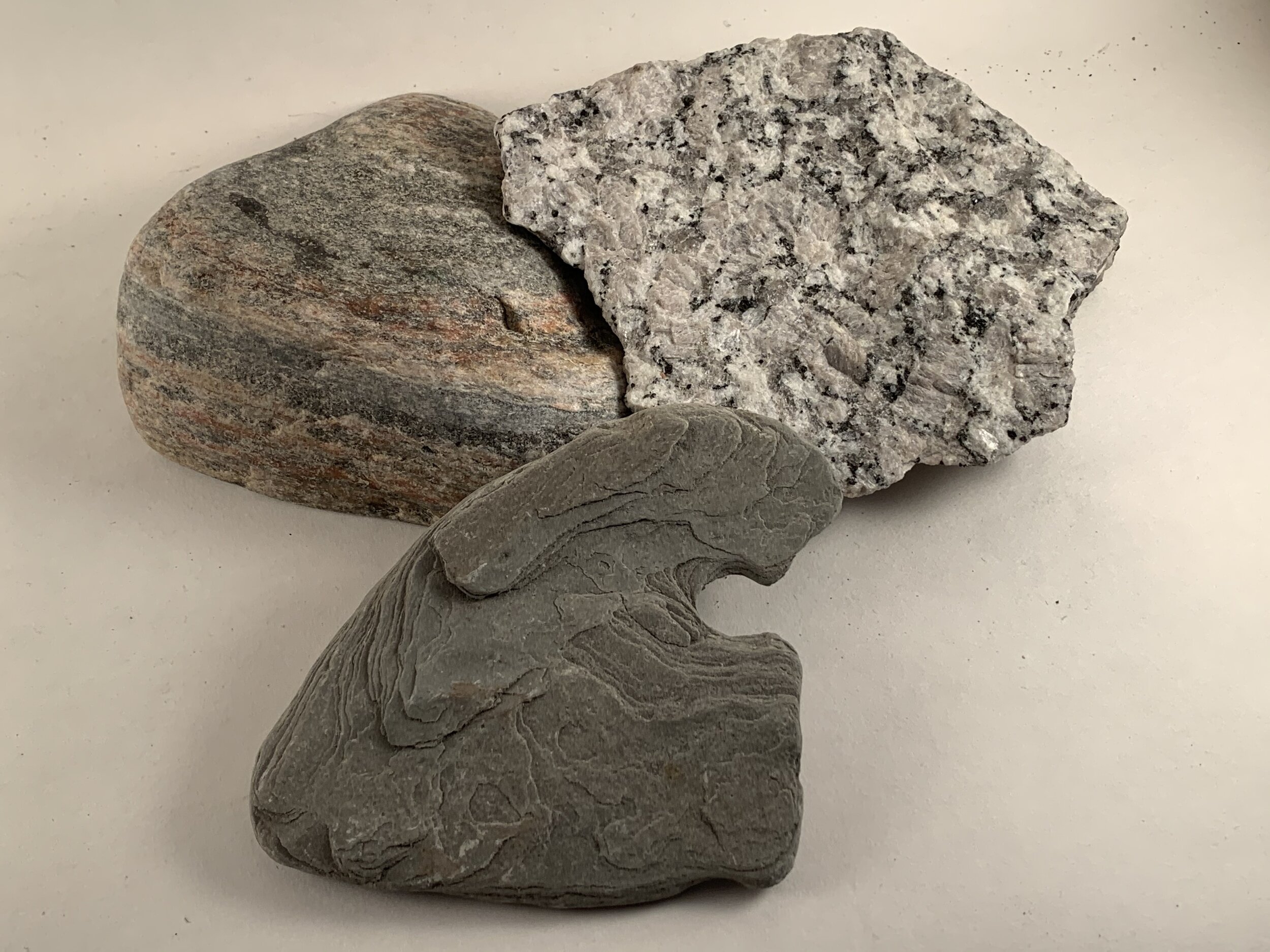Clockwise top left to bottom: Gneiss, Granite, and Shale
The Earth is a dynamic body with internal and external forces that interact, forcing rocks and substances out of their original state (equilibrium). Because of this continuing interaction between environments there are three general rock types that form: Igneous, Sedimentary, and Metamorphic.
Magma is molten rock (high-temperature liquid) that can contain suspended crystals and gas where upon cooling, solidifies forming igneous rocks. Magma brought to the surface by volcanic eruptions cools quickly and solidifies to a rock called basalt. Magma may also solidify slowly deep beneath the surface and later brought to the earth’s surface by uplift and erosion of overlying soil. Granite is a common igneous rock from this event (see photo).
Any rock type, once out of its natural environment and exposed on the earth’s surface, will undergo weathering and erosion creating debris that is transported and deposited as sediment. Over time, this sediment becomes lithified and compacted into a sedimentary rock such as shale (see photo) or sandstone.
Forces in the earth can carry igneous and sedimentary rock to lower levels in the crust where heat and pressure increase with increasing depth of burial. These displaced rocks will begin to change by recrystallization of the minerals within the rock creating the third rock type, metamorphic – which comes from the word “metamorphisis” meaning “change.” A common metamorphic rock is called “gneiss” and typically displays a banding or layering texture (see photo).

